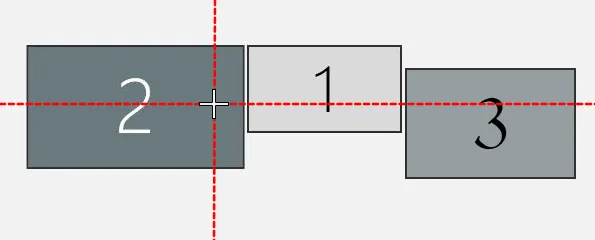我有一个多显示器设置,我希望在用户移动光标时绘制一条垂直和水平的线。我想要绘制的线应跨越所有显示器。我不确定如何调整我的表单以实现这一点,因为当我将其全屏时,它只最大化到一个监视器。我需要为每个监视器制作一个表单,并在光标移动时向每个表单发送信号以重新绘制线吗?
using System;
using System.Collections.Generic;
using System.ComponentModel;
using System.Data;
using System.Drawing;
using System.Drawing.Drawing2D;
using System.Linq;
using System.Text;
using System.Threading.Tasks;
using System.Windows.Forms;
namespace fitAllScreens
{
public partial class Form1 : Form
{
public Form1()
{
InitializeComponent();
FullScreen();
}
public void FullScreen()
{
List<int> xBounds = new List<int>() {};
List<int> yBounds = new List<int>() {};
foreach (Screen screen in Screen.AllScreens)
{
var bounds = screen.Bounds;
xBounds.Add(bounds.X);
xBounds.Add(bounds.Right);
yBounds.Add(bounds.Y);
yBounds.Add(bounds.Bottom);
}
int minX = xBounds.Min();
int maxX = xBounds.Max();
int minY = yBounds.Min();
int maxY = yBounds.Max();
Console.WriteLine(minX + " - " + maxX + " - " + minY + " - " + maxY);
}
protected override void OnMouseMove(MouseEventArgs e)
{
base.OnMouseMove(e);
Invalidate();
}
protected override void OnPaint(PaintEventArgs e)
{
var graphics = e.Graphics;
base.OnPaint(e);
// Draw ruler guides
Console.WriteLine(Cursor.Position);
var pos = this.PointToClient(Cursor.Position);
using (var pen = new Pen(Color.Red))
{
pen.DashStyle = DashStyle.Dot;
var screenBounds = Screen.PrimaryScreen.Bounds;
graphics.DrawLine(pen, pos.X, screenBounds.Y, pos.X, screenBounds.Height);
graphics.DrawLine(pen, screenBounds.X, pos.Y, screenBounds.Width, pos.Y);
}
}
}
}
